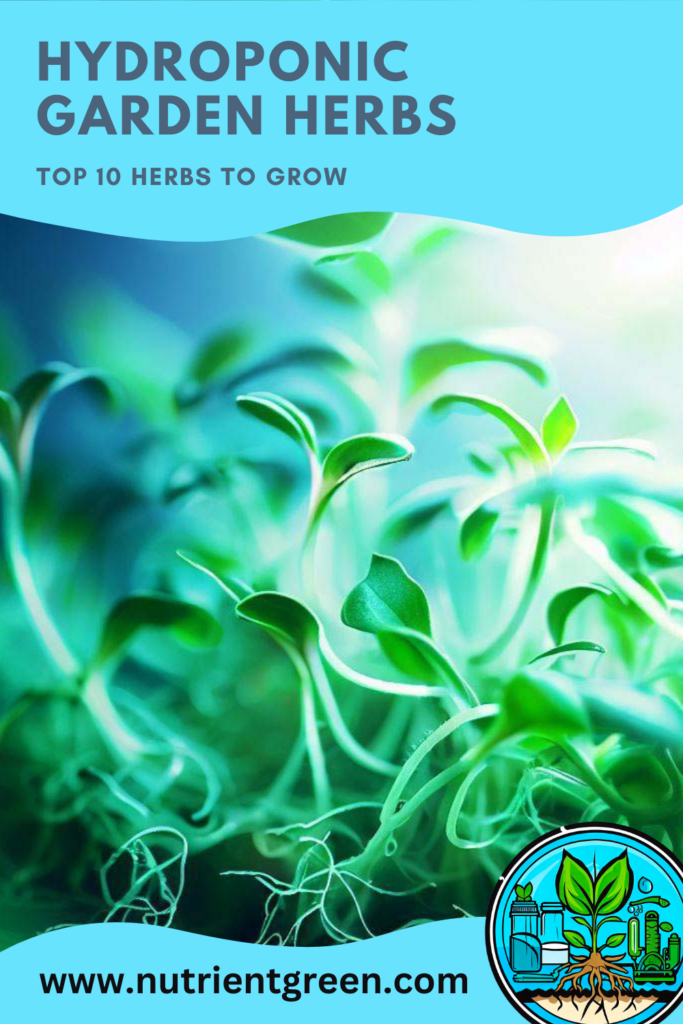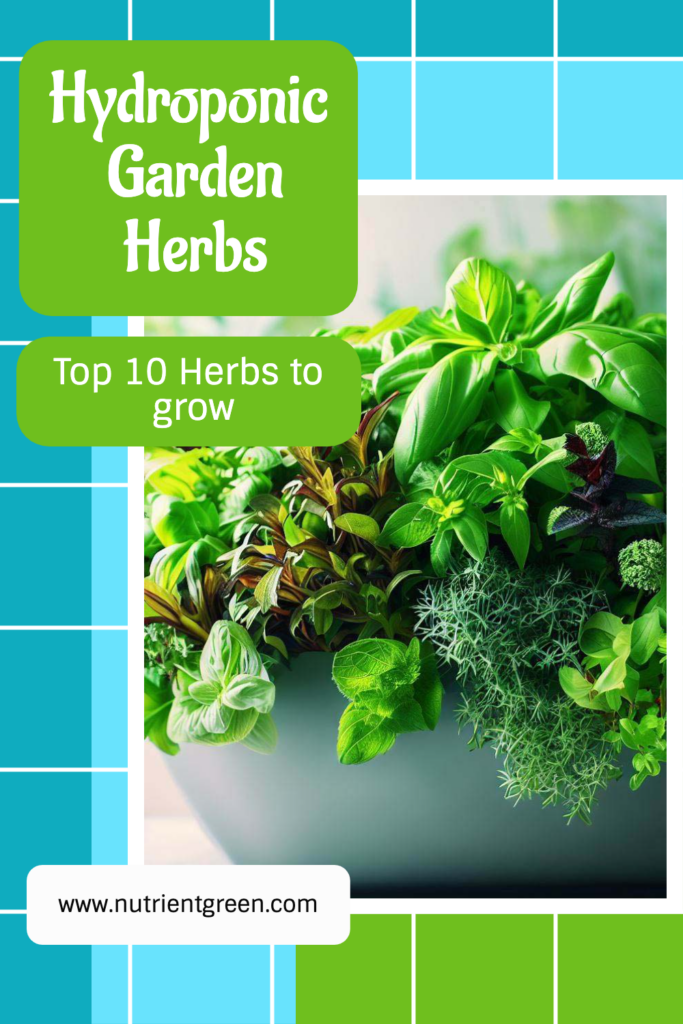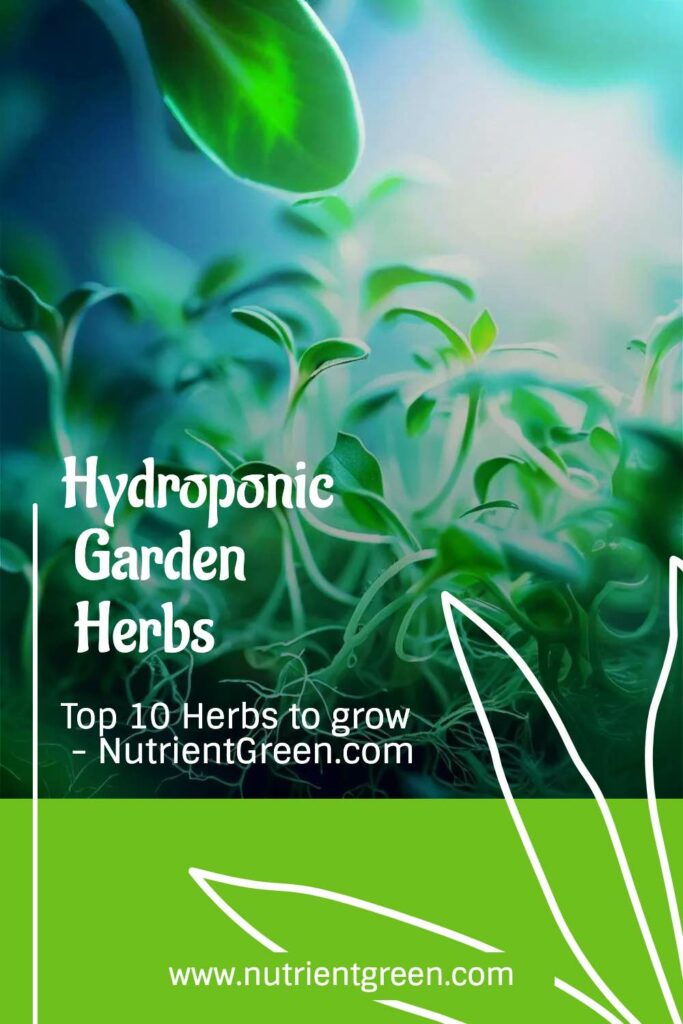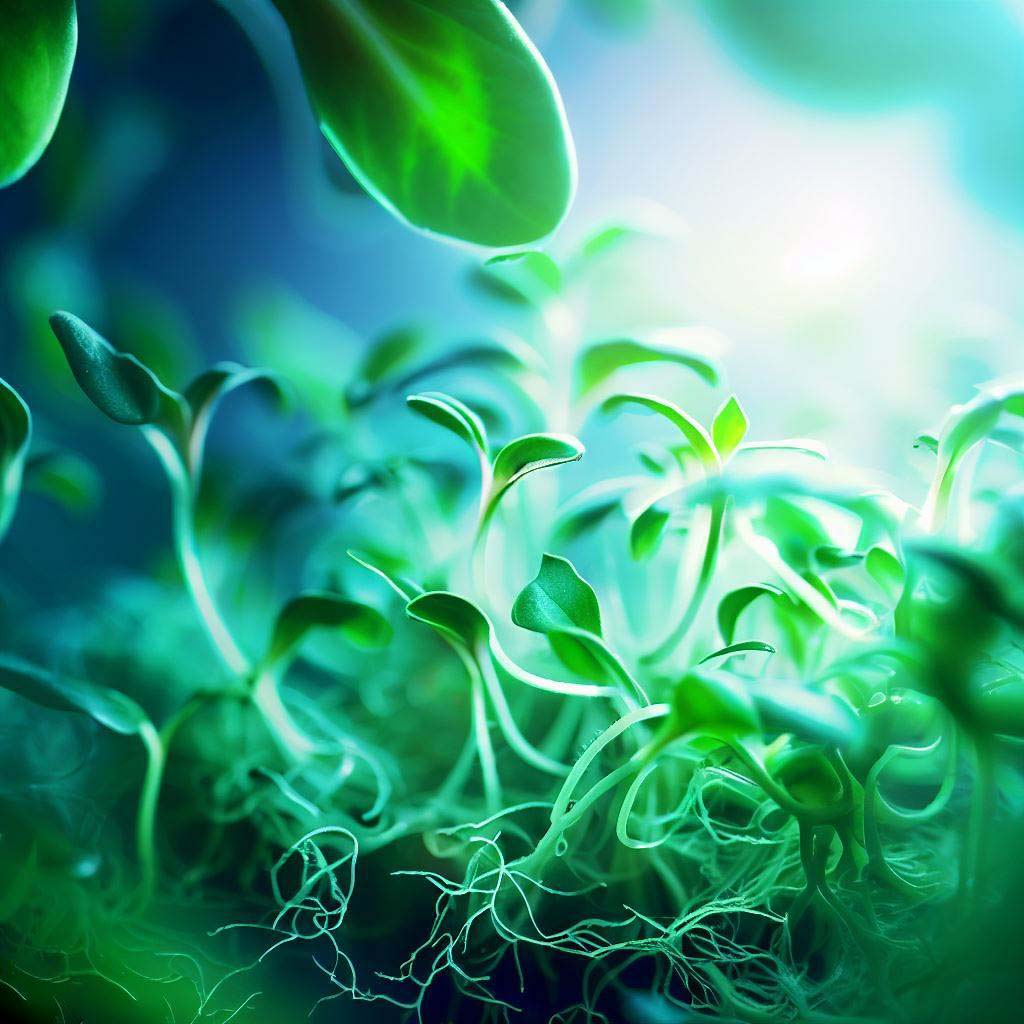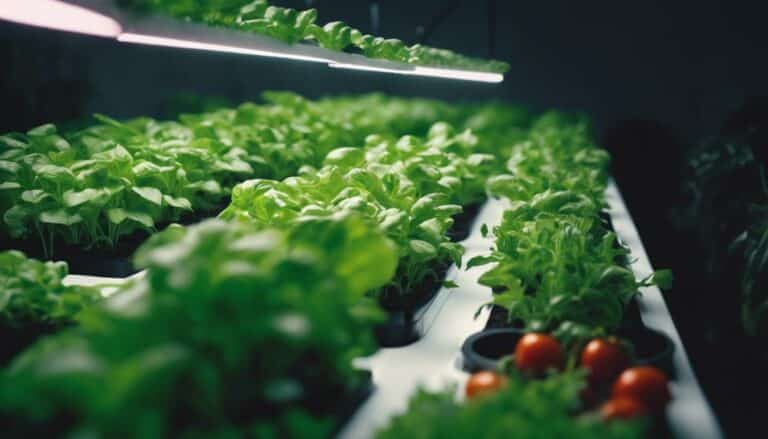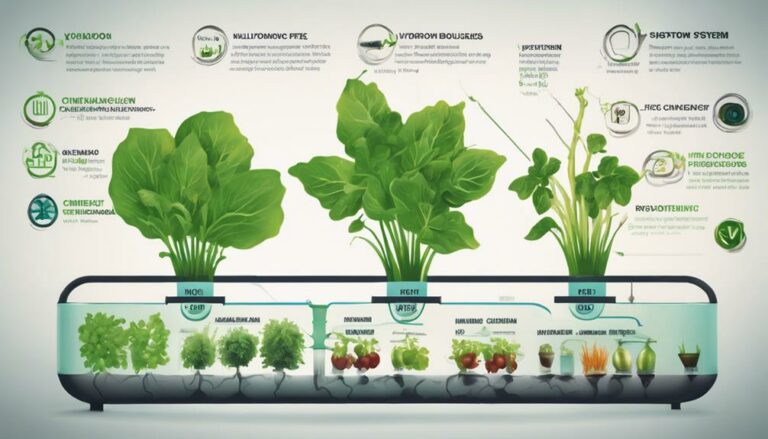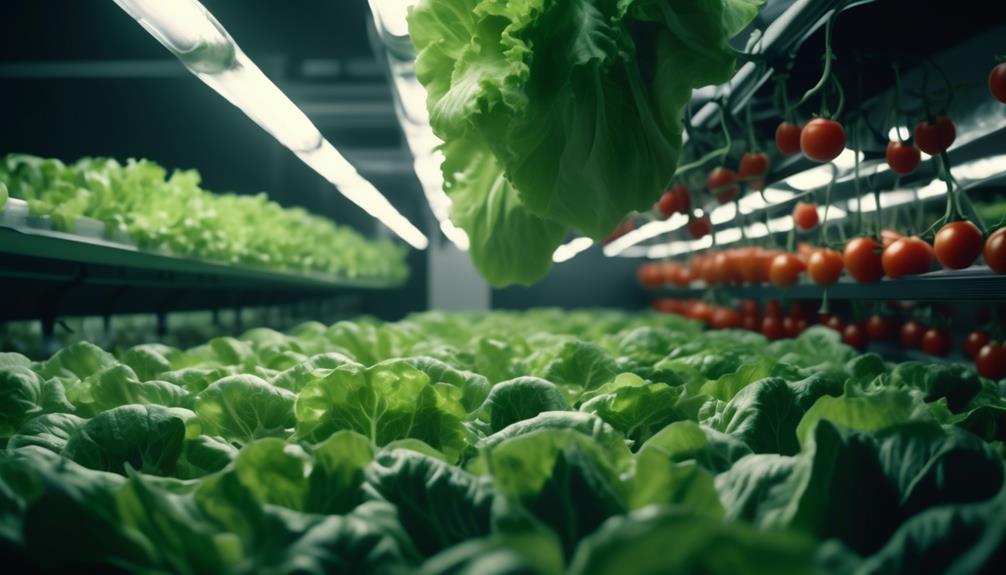Do you love herbs? I know I do. They are so versatile and useful, not to mention delicious and aromatic. They can add flavor and freshness to any dish, from salads and soups to sauces and desserts. They can also provide health benefits, such as boosting your immune system, soothing your nerves, or healing your wounds. That’s why I grow hydroponic garden herbs.
Table of Contents
Introduction
However, the process of growing herbs can present its challenges. It requires ample space, suitable soil, sufficient water, and optimal sunlight for them to flourish. Additionally, dealing with pests, diseases, weeds, and the unpredictable changes in weather can pose further obstacles. Moreover, the time it takes for herbs to mature and be ready for harvest can be quite lengthy.
What if I were to introduce you to a superior method of herb cultivation? A method that eliminates the need for soil, conserves water usage, occupies minimal space, and yields abundant harvests. Imagine being able to cultivate herbs throughout the year, regardless of the prevailing season or climate conditions. Envision having access to fresh and aromatic herbs at your convenience, whenever your culinary creations demand them.
Sounds too good to be true? Well, it’s not. It’s called hydroponics. Hydroponics is a method of growing plants in water and nutrients, without soil. It’s a simple and efficient way to grow herbs that can save you time, money, and hassle.
In this article, I will show you why growing herbs in hydroponics is the best way to grow them, and how to do it properly. I will also share with you the top 10 herbs that are easy and rewarding to grow in hydroponics, and how to harvest and store them. By the end of this article, you will be a hydroponic herb master, and you will be able to enjoy your own hydroponic herb garden.
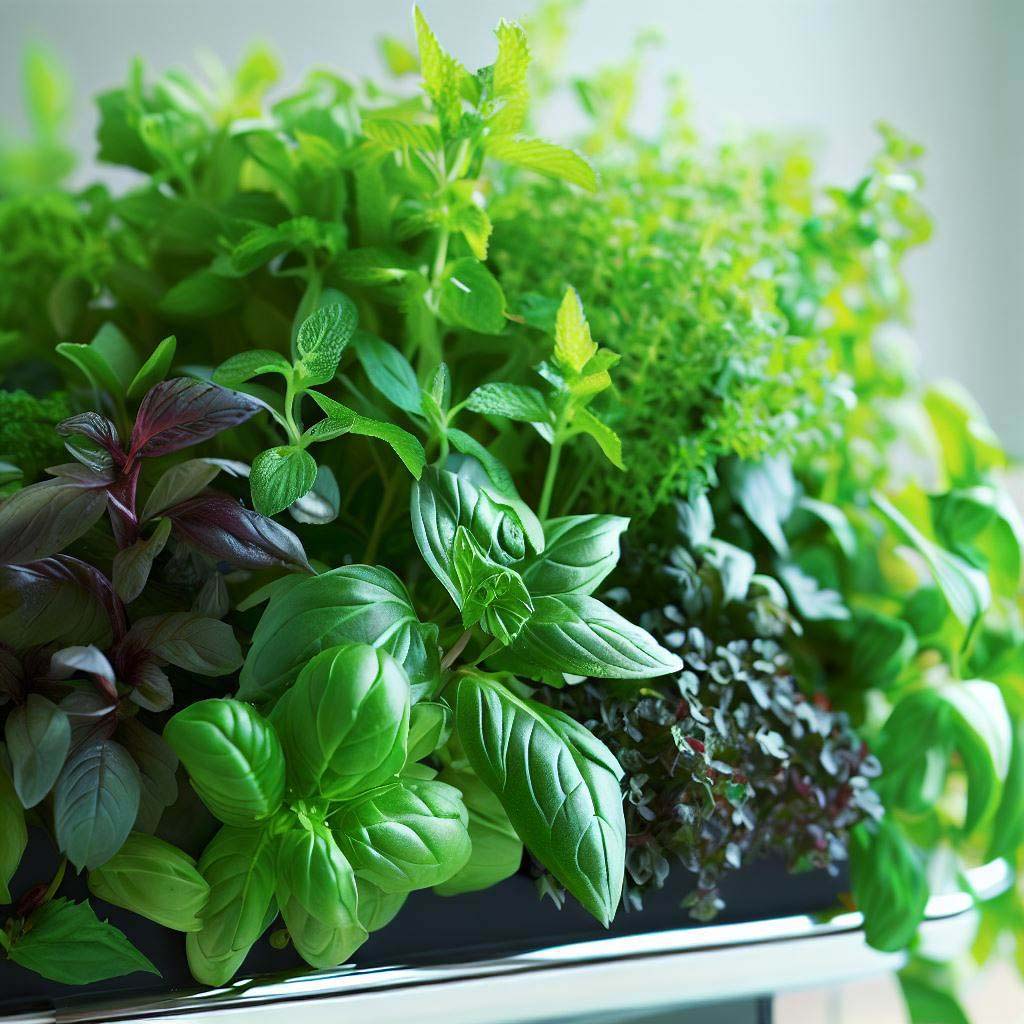
What are the Benefits of Growing Herbs in Hydroponics?
Growing herbs in hydroponics has many benefits over growing them in soil. Here are some of them:
- Faster growth: Hydroponic herbs grow faster than soil-grown herbs because they have direct access to water and nutrients. They don’t have to compete with other plants or waste energy on developing roots. Research shows that hydroponic herbs can grow up to 50% faster than soil-grown herbs.
- Higher yield: Hydroponic garden herbs produce more yield than soil-grown herbs because they have optimal conditions for growth. They don’t suffer from stress or limitations caused by soil quality, pests, diseases, weeds, or weather changes. Research shows that hydroponic herbs can produce up to 100% more yield than soil-grown herbs.
- More aroma and flavor: Hydroponic herbs have more aroma and flavor than soil-grown herbs because they contain more aromatic oils. These oils are responsible for the scent and taste of herbs, and they are influenced by the environment and the nutrients of the plants. Research shows that hydroponic herbs can contain up to 40% more aromatic oils than soil-grown herbs.
- Less water consumption: Hydroponic herbs use less water than soil-grown herbs because they recycle the water they use. The water in a hydroponic system is circulated through pipes or tubes, and it is returned to a reservoir after being used by the plants. The water is then filtered and replenished with nutrients before being used again by the plants. This way, the water is not wasted or evaporated as it would be in soil.
- Less space requirement: Hydroponic garden herbs have a distinct advantage when it comes to space requirements. Unlike their soil-grown counterparts, they can be cultivated vertically or horizontally, eliminating the need for large pots or containers to accommodate soil and root support. This versatility enables them to thrive in compact areas such as windowsills, countertops, shelves, or even walls. Furthermore, various hydroponic systems like ebb and flow, drip irrigation, nutrient film technique, deep water culture, and aeroponics offer different options for cultivating these herbs, making the most efficient use of available space.
- Year-round production: The beauty of hydroponic garden herbs lies in their ability to flourish throughout the year, unaffected by the seasonal and climatic limitations that impact soil-grown herbs. Whether indoors or outdoors, these herbs thrive as long as they receive adequate light, maintain optimal temperature, and have suitable humidity levels. This versatility extends to their cultivation in various locations, be it urban or rural settings, as long as there is a reliable water source and access to electricity. The freedom to grow hydroponic herbs transcends the confines of traditional gardening, offering endless possibilities for herb enthusiasts in any environment.
As you can see, growing herbs in hydroponics has many advantages over growing them in soil. But you may also wonder if there are any challenges or drawbacks to hydroponics. Well, there are some, but they are not insurmountable. Here are some of them:
- Cost: While the initial investment in a hydroponic system and its components, including pumps, pipes, reservoirs, and lights, may make hydroponic herbs seem more expensive compared to their soil-grown counterparts, the long-term savings are significant. With reduced water usage, lower fertilizer and pesticide requirements, and higher yields resulting in less waste, the cost-effectiveness of hydroponic herb cultivation becomes evident over time.
- Complexity: Setting up and maintaining hydroponic herbs may appear more intricate than caring for soil-grown herbs, as regular monitoring and adjustment of conditions and nutrients in the hydroponic system are necessary. However, simplifying the process is achievable through the use of ready-made or DIY hydroponic systems tailored to individual needs and preferences. Additionally, various tools and devices are available to automate or assist with these tasks, streamlining the overall complexity.
- Maintenance: Sustaining the health and productivity of hydroponic herbs demands diligent maintenance, including periodic cleaning and sanitization of the hydroponic system and its components. Preventing and addressing issues such as algae growth, nutrient deficiencies, and pH imbalances are also important. However, by implementing best practices and adhering to helpful tips that will be shared later, you can effectively prevent or minimize these challenges, ensuring smooth and thriving hydroponic herb growth.
As you can see, growing herbs in hydroponics is not without its challenges or drawbacks. But they are not impossible to overcome. With some knowledge and experience, you can grow herbs in hydroponics successfully and enjoyably.
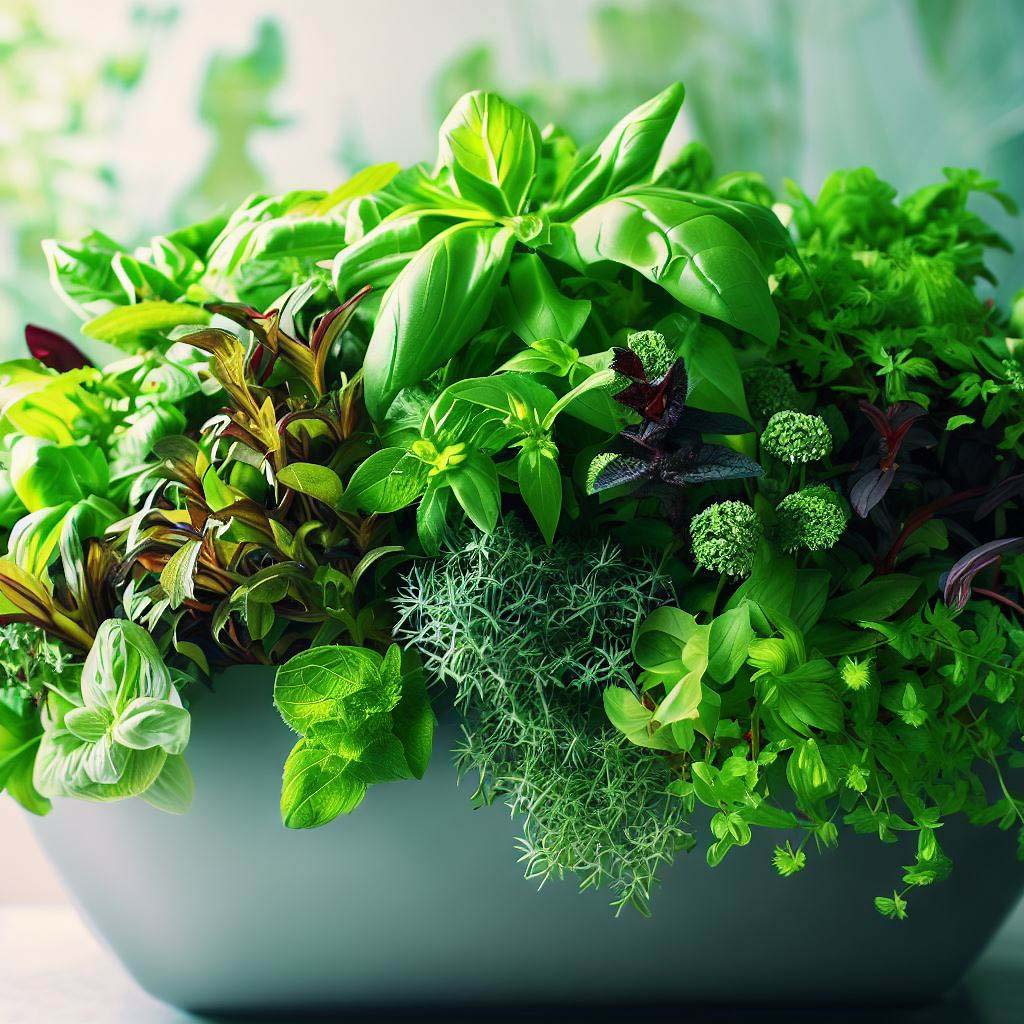
What are the Best Systems for Growing Herbs in Hydroponics?
There are different types of hydroponic systems that you can use to grow hydroponic garden herbs. Each type has its own advantages and disadvantages for growing herbs. Here are some of the most common types of hydroponic systems for growing herbs:
Ebb and flow
This hydroponic system operates by periodically flooding and draining a tray or table with water and nutrient solutions. Plants are grown in pots or baskets filled with an inert medium such as rockwool, clay pebbles, or perlite. The medium retains the water and nutrients until the next cycle. While this system is straightforward to set up and use, it necessitates a timer and pump to regulate the flooding cycles. However, it is susceptible to power outages or pump failures that may cause plants to dry out or become waterlogged.
Drip
The drip hydroponic system involves delivering water and nutrient solutions directly to the roots of each plant through tubes or emitters. Plants are cultivated in pots or baskets filled with an inert medium. Excess water and nutrients are collected in a reservoir for recycling or disposal. This system is highly efficient and precise, although it requires a pump and filter to ensure proper delivery. It is important to note that it can be prone to clogging or leakage, which may disrupt the flow of water and nutrients.
Nutrient film technique (NFT)
In the NFT hydroponic system, a thin film of water and nutrient solution flows along a channel or gutter where the plants are situated. Plants are held in net pots or baskets without any medium, with their roots hanging down into the flowing solution for absorption. The water and nutrients are continuously recirculated using a reservoir and pump. This type of system is cost-effective and straightforward, although it relies on a slope and pump to maintain the necessary flow. It is crucial to monitor for any interruptions or insufficiencies that may lead to root rot or nutrient deficiency.
Deep water culture (DWC)
The DWC hydroponic system involves suspending plants in a container filled with water and nutrient solution. Plants are held in net pots or baskets without any medium, with roots submerged in the water for absorption. Air pumps and air stones are used to oxygenate the water and provide essential oxygen to the roots. This system is simple and affordable, but it necessitates the use of an air pump and stone for proper water oxygenation. Additionally, it can be susceptible to algae growth and temperature fluctuations that may affect water quality.
Aeroponics
Aeroponics operates by misting or spraying water and nutrient solutions directly onto the roots of plants. Plants are grown in net pots or baskets without any medium, with roots exposed to the air. A pump and nozzles or sprinklers are used to deliver the water and nutrients from a reservoir. While aeroponics is an advanced and efficient hydroponic system, it requires careful maintenance to prevent clogging or malfunctioning that could potentially harm or dry out the roots.
As you can see, there are different types of hydroponic systems that you can use to grow herbs in hydroponics. Each type has its own pros and cons for growing herbs. You can choose the type that suits your needs and preferences, or you can experiment with different types to see which one works best for you.
Hydroponic Systems To Buy
However, if you are a beginner and you want to start growing herbs in hydroponics easily and affordably, I recommend using one of these ready-made or DIY hydroponic systems:
- iDoo Hydroponics Growing System 12 Pods: This is an amazing hydroponic indoor garden that’s perfect for growing a variety of herbs and leafy greens. It comes with 12 pods, grow lights, a 4.5L reservoir, a water pump, and a nutrient solution. All you have to buy are the seeds. You can control the settings and monitor the conditions with a smart LED panel. You can also adjust the height of the lights according to the growth of your plants. This system is easy to set up and operate, and it looks sleek and stylish on your countertop or shelf.
- AeroGarden Harvest Elite: This is another great hydroponic indoor garden that’s ideal for growing herbs and other small plants. It comes with 6 pods, grow lights, a 1.9L reservoir, a water pump, and a nutrient solution. All you have to buy are the seeds. You can control the settings and monitor the conditions with an LCD panel. You can also adjust the height of the lights according to the growth of your plants. This system is easy to set up and operate, and it looks elegant and modern on your countertop or shelf.
What are the General Conditions for Growing hydroponic garden herbs?
Growing hydroponic garden herbs requires maintaining the optimal conditions for their growth, such as pH, EC, temperature, light, and humidity. Here are the ideal ranges and values for each condition for most herbs:
- pH: The pH level indicates the acidity or alkalinity of water and nutrients, playing a crucial role in nutrient availability and absorption by plants. Most herbs thrive in a pH range of 5.5 to 6.5. Utilizing a pH meter or test kit, you can measure the pH of your water and nutrients and make adjustments using pH up or pH down solutions.
- EC: Electrical conductivity (EC) gauges the concentration of nutrients in the water, influencing plant growth rate and quality. For most herbs, maintaining an EC range of 1.5 to 2 mS/cm (millisiemens per centimeter) is optimal. By employing an EC meter or test kit, you can measure the EC of your water and nutrients and make necessary adjustments by adding more water or nutrients.
- Temperature: Temperature indicates the warmth or coldness of the plant’s surroundings, significantly affecting metabolism and development. Most herbs thrive within a temperature range of 65°F to 75°F (18°C to 24°C). By using a thermometer or thermostat, you can monitor the temperature of your environment and regulate it as needed through the use of heaters, fans, coolers, or vents.
- Light: Light intensity determines the brightness of the plant’s environment, impacting photosynthesis and flowering. For most herbs, an ideal light intensity falls between 2000 and 4000 lux (lumens per square meter), with a recommended light duration of 14 to 16 hours per day. Employing a lux meter or light meter, you can measure the light intensity in your environment and make necessary adjustments using artificial lights, timers, or dimmers.
- Humidity: Humidity refers to the moisture content in the air surrounding the plants, influencing transpiration and respiration processes. Maintaining a relative humidity (RH) range of 40% to 60% is ideal for most herbs. By using a hygrometer or humidity meter, you can measure the humidity in your environment and regulate it as needed using humidifiers, dehumidifiers, misters, or fans.
When cultivating herbs in a hydroponic system, it’s crucial to consistently monitor and regulate the conditions and nutrient levels. Fortunately, there are various tools and devices available to aid you in these tasks. Meters, kits, solutions, pumps, filters, timers, and more can prove invaluable in maintaining optimal conditions. Additionally, several apps and software, such as Growtronix, HydroBuddy, and SmartBee, offer automation and assistance, simplifying the process of managing your hydroponic system. These resources empower you to streamline your herb-growing endeavors and achieve the best possible results.
What are the Top 10 Herbs for Your Hydroponic Garden?
There are many herbs that you can grow in hydroponics, but some are easier and more rewarding than others. Here are the top 10 herbs that I recommend for your hydroponic garden:
- Basil: Basil is one of the most popular and versatile herbs to grow in hydroponics. It has a sweet and spicy flavor and aroma that goes well with many dishes, especially Italian and Asian cuisine. It also has many health benefits, such as anti-inflammatory, antioxidant, antibacterial, and antiviral properties. Basil is easy to grow in hydroponics, as it likes warm and humid conditions and moderate light. It can grow up to 2 feet tall and produce large leaves that can be harvested frequently. There are many varieties of basil to choose from, such as sweet basil, Genovese basil, Thai basil, purple basil, lemon basil, lime basil, lettuce basil, spicy basil, etc.
- Chamomile: Chamomile is a lovely and soothing herb to grow in hydroponics. It has a mild and floral flavor and aroma that makes it ideal for tea and other beverages. It also has many health benefits, such as calming, relaxing, anti-inflammatory, antispasmodic, and antiseptic properties. Chamomile is easy to grow in hydroponics, as it likes cool and dry conditions and bright light. It can grow up to 2 feet tall and produce small flowers that can be harvested when they are fully open. There are two main types of chamomile to choose from, such as German chamomile and Roman chamomile.
- Rosemary: Rosemary is a fragrant and flavorful herb to grow in hydroponics. It has a piney and woody flavor and aroma that goes well with many dishes, especially Mediterranean and French cuisine. It also has many health benefits, such as stimulating, invigorating, antioxidant, antibacterial, and antifungal properties. Rosemary is easy to grow in hydroponics, as it likes warm and dry conditions and strong light. It can grow up to 3 feet tall and produce needle-like leaves that can be harvested anytime. There are several varieties of rosemary to choose from, such as upright rosemary, creeping rosemary, blue rosemary, pink rosemary, etc.
- Oregano: Oregano is a pungent and savory herb to grow in hydroponics. It has a peppery and earthy flavor and aroma that goes well with many dishes, especially Mexican and Greek cuisine. It also has many health benefits, such as anti-inflammatory, antioxidant, antibacterial, and antiviral properties. Oregano is easy to grow in hydroponics, as it likes warm and dry conditions and moderate light. It can grow up to 2 feet tall and produce small leaves that can be harvested anytime. There are many varieties of oregano to choose from, such as common oregano, Greek oregano, Italian oregano, Mexican oregano, golden oregano, etc.
- Cilantro: Cilantro is a fresh and zesty herb to grow in hydroponics. It has a citrusy and herbal flavor and aroma that goes well with many dishes, especially Asian and Latin American cuisine. It also has many health benefits, such as detoxifying, cleansing, antioxidant, antibacterial, and antifungal properties. Cilantro is easy to grow in hydroponics, as it likes cool and moist conditions and low light. It can grow up to 2 feet tall and produce broad leaves that can be harvested frequently. You can also harvest the seeds of cilantro, which are known as coriander, and use them as a spice.
- Anise: Anise is a sweet and aromatic herb to grow in hydroponics. It has a licorice-like flavor and aroma that goes well with many dishes, especially desserts and beverages. It also has many health benefits, such as digestive, carminative, expectorant, and antispasmodic properties. Anise is easy to grow in hydroponics, as it likes warm and humid conditions and bright light. It can grow up to 3 feet tall and produce feathery leaves that can be harvested anytime. You can also harvest the seeds of anise, which are used as a spice or a tea.
- Dill: Dill is a tangy and refreshing herb to grow in hydroponics. It has a lemony and grassy flavor and aroma that goes well with many dishes, especially seafood and salads. It also has many health benefits, such as digestive, anti-inflammatory, antiseptic, and diuretic properties. Dill is easy to grow in hydroponics, as it likes cool and moist conditions and moderate light. It can grow up to 3 feet tall and produce fern-like leaves that can be harvested frequently. You can also harvest the seeds of dill, which are used as a spice or a tea.
- Catnip: Catnip is a fun and relaxing herb to grow in hydroponics. It has a minty and floral flavor and aroma that makes it ideal for tea and other beverages. It also has many health benefits, such as calming, sedative, antispasmodic, and anti-inflammatory properties. Catnip is easy to grow in hydroponics, as it likes warm and dry conditions and bright light. It can grow up to 3 feet tall and produce heart-shaped leaves that can be harvested anytime. You can also harvest the flowers of catnip, which are attractive to bees and butterflies. And of course, you can share your catnip with your feline friends, who will love it.
- Parsley: Parsley is a crisp and nutritious herb to grow in hydroponics. It has a mild and green flavor and aroma that goes well with many dishes, especially soups and sauces. It also has many health benefits, such as antioxidant, anti-inflammatory, diuretic, and blood-purifying properties. Parsley is easy to grow in hydroponics, as it likes cool and moist conditions and moderate light. It can grow up to 2 feet tall and produce curly or flat leaves that can be harvested frequently. You can also harvest the seeds of parsley, which are used as a spice or a tea.
- Thyme: Thyme is a fragrant and versatile herb to grow in hydroponics. It has a lemony and woody flavor and aroma that goes well with many dishes, especially meat and poultry. It also has many health benefits, such as antiseptic, antibacterial, antifungal, and expectorant properties. Thyme is easy to grow in hydroponics, as it likes warm and dry conditions and strong light. It can grow up to 1 foot tall and produce small leaves that can be harvested anytime. There are many varieties of thyme to choose from, such as common thyme, lemon thyme, caraway thyme, orange thyme, etc.
As you can see, there are many herbs that you can grow in hydroponics, but these are the top 10 that I recommend for your hydroponic garden. They are easy and rewarding to grow, and they will provide you with fresh and flavorful herbs whenever you want them.
Table 1: Hydroponic Herb Garden and Their Unique Characteristics
| Herb | Flavor | Aroma | Benefits | Requirements |
|---|---|---|---|---|
| Basil | Sweet and spicy | Fresh and fragrant | Anti-inflammatory, antioxidant, antibacterial, antiviral | Warm and humid, moderate light |
| Chamomile | Mild and floral | Calming and soothing | Calming, relaxing, anti-inflammatory, antispasmodic, antiseptic | Cool and dry, bright light |
| Rosemary | Piney and woody | Strong and aromatic | Stimulating, invigorating, antioxidant, antibacterial, antifungal | Warm and dry, strong light |
| Oregano | Peppery and earthy | Pungent and savory | Anti-inflammatory, antioxidant, antibacterial, antiviral | Warm and dry, moderate light |
| Cilantro | Citrusy and herbal | Fresh and zesty | Detoxifying, cleansing, antioxidant, antibacterial, antifungal | Cool and moist, low light |
| Anise | Licorice-like | Sweet and aromatic | Digestive, carminative, expectorant, antispasmodic | Warm and humid, bright light |
| Dill | Lemony and grassy | Tangy and refreshing | Digestive, anti-inflammatory, antiseptic, diuretic | Cool and moist, moderate light |
| Catnip | Minty and floral | Fun and relaxing | Calming, sedative, antispasmodic, anti-inflammatory | Warm and dry, bright light |
| Parsley | Mild and green | Crisp and nutritious | Antioxidant, anti-inflammatory, diuretic, blood-purifying | Cool and moist, moderate light |
| Thyme | Lemony and woody | Fragrant and versatile | Antiseptic, antibacterial, antifungal, expectorant | Warm and dry, strong light |
How to Harvest and Store Your Hydroponic Herbs?
Growing herbs in hydroponics is not only about growing them, but also about harvesting and storing them properly. Here are some tips on how to harvest and store your hydroponic herbs:
- Harvesting: Harvest your hydroponic herbs in the morning, when they reach their peak flavor and aroma. Use scissors or your fingers to cut or pinch off the stems or leaves. Harvest an amount that suits your needs, but avoid taking more than 1/3 of the plant at a time to allow for regrowth. Additionally, fully developed flowers or seeds of certain herbs like chamomile, anise, dill, catnip, and parsley can also be harvested.
- Storing: Fresh use is the best approach for storing your hydroponic herbs, ideally right after harvesting. However, if you have excess herbs, you can store them for later use. Various methods exist depending on your desired storage duration and intended use. Consider the following options:
- Refrigeration: Keep your hydroponic herbs fresh in the refrigerator for up to a week by wrapping them in a damp paper towel or cloth, then placing them in a plastic bag or container. Alternatively, you can place them in a water-filled glass jar or bottle, covering them with a lid or plastic wrap. Remember to change the water or damp cloth every few days to maintain freshness.
- Freezing: Preserve your hydroponic herbs for up to 6 months by finely chopping them and placing them in an ice cube tray filled with water or oil. Alternatively, you can store them in a freezer bag or container without any liquid. Label and date your frozen herbs and use them within 6 months for optimal flavor.
- Drying: Dry your hydroponic herbs for up to a year by hanging them upside down in a well-ventilated, dark, and dry location. Alternatively, you can use a dehydrator or set your oven to a low temperature until the herbs become crisp and brittle. Store the dried herbs in airtight jars or containers, away from light and heat.
- Preserving: Extend the shelf life of your hydroponic herbs for up to a year by infusing them in vinegar, oil, honey, salt, sugar, or alcohol. Alternatively, you can create pesto, butter, cheese, or jam using your herbs. Properly sterilize jars or bottles, ensuring a secure seal. Store your preserved herbs in a cool and dark place or in the refrigerator.
As you can see, there are different ways to harvest and store your hydroponic herbs. You can choose the method that suits your needs and preferences, or you can experiment with different methods to see which one works best for you.
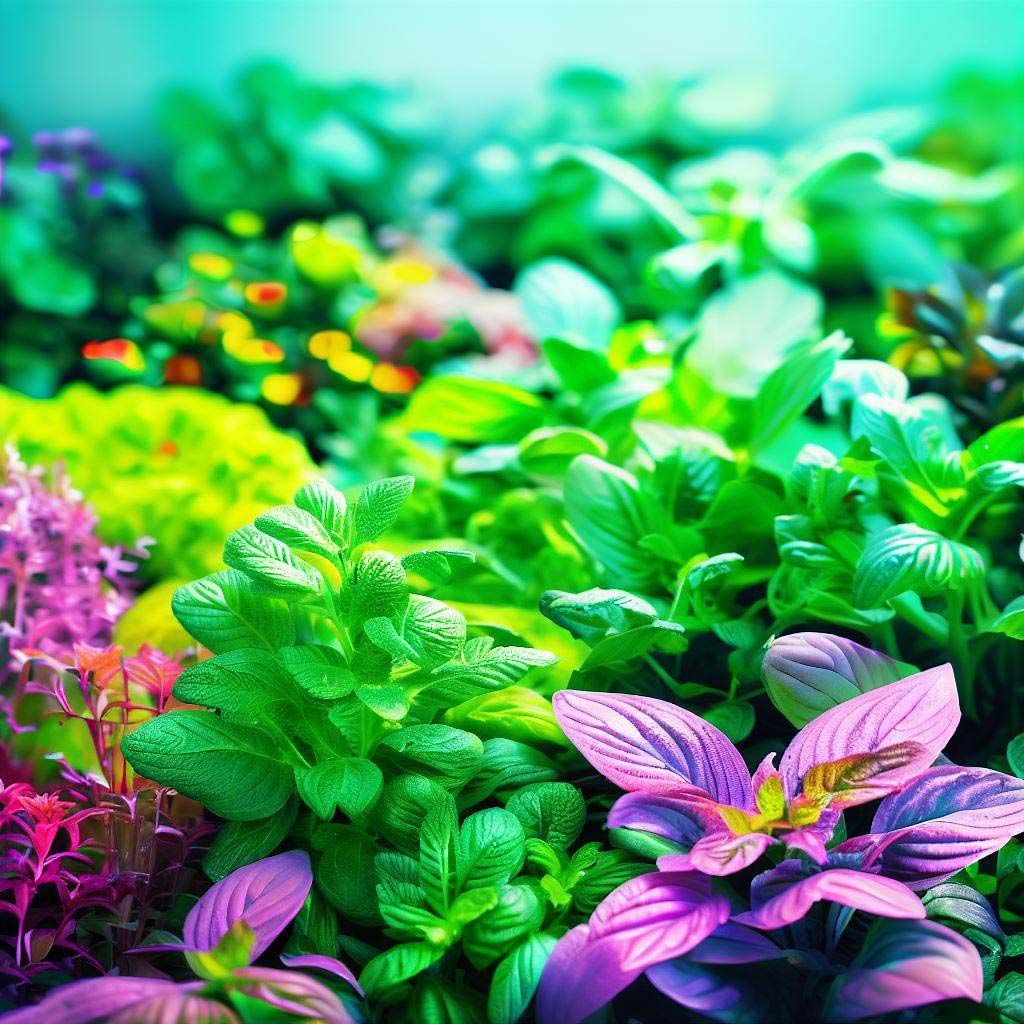
Conclusion
Growing herbs in hydroponics is a great way to grow your own fresh and flavorful herbs at home. It has many benefits, such as faster growth, higher yield, more aroma and flavor, less water consumption, less space requirement, and year-round production. It also has some challenges, such as cost, complexity, and maintenance, but they are not impossible to overcome. With some knowledge and experience, you can grow herbs in hydroponics successfully and enjoyably.
There are different types of hydroponic systems that you can use to grow herbs in hydroponics, such as ebb and flow, drip, nutrient film technique, deep water culture, aeroponics, etc. You can choose the type that suits your needs and preferences, or you can use a ready-made or a DIY hydroponic system that is easy and affordable to set up and operate.
There are also different conditions that you need to monitor and adjust for growing herbs in hydroponics, such as pH, EC, temperature, light, and humidity. You can use some tools and devices that can help you with these tasks, such as meters, kits, solutions, pumps, filters, timers, etc. You can also use some apps or software that can automate or assist you with these tasks.
There are many herbs that you can grow in hydroponics, but the top 10 that I recommend for your hydroponic garden are basil, chamomile, rosemary, oregano, cilantro, anise, dill, catnip, parsley, and thyme. They are easy and rewarding to grow, and they will provide you with fresh and flavorful herbs whenever you want them.
Finally, there are different ways to harvest and store your hydroponic herbs, such as refrigerating, freezing, drying, or preserving them. You can choose the method that suits your needs and preferences, or you can use them fresh as soon as possible after harvesting.
I hope this article has inspired you to try growing herbs in hydroponics. It’s a fun and rewarding hobby that will give you a lot of satisfaction and enjoyment. You will be able to enjoy your own hydroponic herb garden and use your herbs in cooking or other purposes.
If you have any questions or comments about growing herbs in hydroponics, feel free to leave them below. I would love to hear from you and help you with your hydroponic herb journey.
Questions on Hydroponic Garden Herbs
How do I start a hydroponic herb garden from seeds or cuttings?
To start a hydroponic herb garden from seeds or cuttings, you need to follow these steps:
- Choose the seeds or cuttings of the herbs that you want to grow. Make sure they are fresh and healthy, and suitable for hydroponics.
- Prepare the growing medium for your seeds or cuttings. You can use rockwool, coco coir, peat moss, perlite, vermiculite, or grow plugs or sponges. Make sure the medium is moist and sterile, and has a pH of 5.5 to 6.5.
- Place the seeds or cuttings in the growing medium. For seeds, make a small hole in the medium and insert the seed. For cuttings, make a diagonal cut at the end of the stem and insert it in the medium. Cover the seeds or cuttings lightly with the medium.
- Place the growing medium in a tray or a container with drainage holes. Cover the tray or container with a clear plastic dome or wrap to create a humid and warm environment for germination or rooting.
- Place the tray or container in a warm and dark place, such as a closet or a cabinet. Keep the temperature between 70°F and 80°F (21°C and 27°C) and the humidity between 80% and 90%.
- Check the tray or container daily for moisture and growth. Mist the medium with water if it is dry, and remove any mold or algae if present. Remove the plastic dome or wrap once the seeds have sprouted or the cuttings have rooted, usually within a week or two.
- Transplant the seedlings or cuttings to your hydroponic system once they have developed two to four true leaves or a strong root system. Follow the instructions of your hydroponic system for transplanting.
How do I fertilize my hydroponic herbs?
To fertilize your hydroponic herbs, you need to follow these steps:
- Choose a hydroponic nutrient solution that is suitable for herbs. You can use a ready-made or a homemade nutrient solution, as long as it contains all the essential macro and micronutrients for plant growth, such as nitrogen, phosphorus, potassium, calcium, magnesium, sulfur, iron, manganese, zinc, copper, boron, molybdenum, etc.
- Dilute the nutrient solution with water according to the instructions of the manufacturer or the recipe. Use distilled, reverse osmosis, or rain water to avoid any contaminants or impurities that may affect the pH or EC of your solution.
- Measure the pH and EC of your nutrient solution with a pH meter or a pH test kit and an EC meter or an EC test kit. Adjust the pH and EC of your solution if needed with pH up or pH down solutions and more water or more nutrients. The ideal pH range for most herbs is between 5.5 and 6.5, and the ideal EC range for most herbs is between 1.5 and 2 mS/cm.
- Add the nutrient solution to your hydroponic system according to the instructions of your system. Make sure to provide enough solution for your plants to access it through their roots, but not too much to cause root rot or nutrient burn. Follow the feeding schedule of your system, which may vary depending on the type of system and the stage of growth of your plants.
- Change the nutrient solution in your hydroponic system periodically to prevent nutrient depletion or accumulation. The frequency of changing your solution may vary depending on the type of system and the size of your reservoir, but a general rule is to change it every two to four weeks. Before changing your solution, flush your system with plain water to remove any salt or residue buildup.
How do I control pests and diseases in my hydroponic herb garden?
To control pests and diseases in your hydroponic herb garden, you need to follow these steps:
- Prevent pests and diseases from entering your hydroponic system by keeping it clean and sanitized. Use sterile growing media, tools, and containers, and wash your hands before handling your plants. Avoid bringing any soil or organic matter into your system, as they may harbor pests or pathogens. Inspect your plants regularly for any signs of infestation or infection, and isolate or remove any affected plants as soon as possible.
- Identify the pests and diseases that are affecting your hydroponic herbs by observing their symptoms and appearance. Some common pests that may attack your hydroponic herbs are aphids, spider mites, whiteflies, thrips, fungus gnats, etc. Some common diseases that may infect your hydroponic herbs are powdery mildew, damping-off, root rot, leaf spot, etc.
- Treat the pests and diseases that are affecting your hydroponic herbs by using natural or organic methods that are safe and effective for hydroponics. Some natural or organic methods that you can use are:
- Neem oil: Neem oil is a plant-based oil that has insecticidal, fungicidal, and antibacterial properties. It can be used to control a variety of pests and diseases, such as aphids, spider mites, whiteflies, thrips, fungus gnats, powdery mildew, damping-off, root rot, leaf spot, etc. To use neem oil, dilute it with water and a mild soap or detergent according to the instructions of the product. Spray the solution on the affected plants every few days until the problem is resolved.
- Diatomaceous earth: Diatomaceous earth is a natural substance made from the fossilized remains of microscopic algae called diatoms. It has abrasive and desiccant properties that can kill many insects by damaging their exoskeletons and dehydrating them. It can be used to control pests such as aphids, spider mites, whiteflies, thrips, fungus gnats, etc. To use diatomaceous earth, sprinkle it on the affected plants or on the surface of the growing medium. Reapply it after watering or rain.
- Hydrogen peroxide: Hydrogen peroxide is a chemical compound that has oxidizing and disinfecting properties. It can be used to control diseases such as powdery mildew, damping-off, root rot, leaf spot, etc. It can also help to oxygenate the water and prevent algae growth. To use hydrogen peroxide, dilute it with water according to the instructions of the product. Spray the solution on the affected plants or add it to the water reservoir. Use it sparingly and carefully, as it may damage the plants or the beneficial microbes in your system.
Harnessing Knowledge for Safer Gardening: Glyphosate and Roundup Insights from Drugwatch
At NutrientGreen.com, we prioritize the well-being of our readers, which is why we turn to trusted resources like Drugwatch, a dedicated platform committed to ensuring the safety of families and providing essential health information.
Glyphosate, the active ingredient in Roundup, stands as one of the most frequently used herbicides worldwide among commercial gardeners. It’s important to note that this chemical has been found to be highly toxic, with the potential to inflict both short-term and long-term health effects. Moreover, its adverse impact extends beyond human health, as it poses a threat to vital pollinators, such as honey bees.
To foster awareness within the farming and gardening communities regarding the dangers of this toxic chemical, we’ve partnered with Drugwatch to craft two comprehensive guides. These guides delve into the various facets of glyphosate, covering its uses, associated symptoms, and potential health risks. For a deeper understanding, we invite you to explore these invaluable resources:
Together, we can make informed choices to protect our health and environment.
How do I grow organic hydroponic garden herbs?
To grow organic hydroponic garden herbs, you need to follow these steps:
- Opt for certified organic seeds or cuttings of the herbs you wish to grow. Ensure that they have been certified as organic by reputable organizations such as USDA, OMRI, or NOP. Avoid using genetically modified or treated seeds or cuttings, as they may not be organic or suitable for hydroponics.
- Select certified organic growing media for your seeds or cuttings. Options like organic rockwool, coco coir, peat moss, perlite, vermiculite, or organic grow plugs or sponges are available. Verify that they have been certified organic by recognized organizations such as USDA, OMRI, or NOP. Refrain from using synthetic or contaminated media like oasis cubes, floral foam, or rock wool with binders or additives, as they may not be organic or appropriate for hydroponics.
- Opt for organic nutrient solutions for your plants. Utilize ready-made organic nutrient solutions or create homemade ones that encompass all the essential macro and micronutrients necessary for plant growth, including nitrogen, phosphorus, potassium, calcium, magnesium, sulfur, iron, manganese, zinc, copper, boron, molybdenum, and others. Ensure that the nutrient solutions have been certified organic by reputable organizations such as USDA, OMRI, or NOP. Avoid synthetic or chemical nutrient solutions like Miracle-Gro, General Hydroponics, or Advanced Nutrients, as they may not be organic or suitable for hydroponics.
- Choose organic pest and disease control methods for your plants. Employ organic and natural methods that are safe and effective for hydroponics, such as neem oil, diatomaceous earth, hydrogen peroxide, and others. Verify that these methods have been certified organic by reputable organizations such as USDA, OMRI, or NOP. Steer clear of synthetic or chemical pest and disease control methods like pesticides, fungicides, herbicides, and similar substances, as they may not be organic or suitable for hydroponics.
As you can see, growing organic hydroponic garden herbs is possible and beneficial. It can provide you with healthier and tastier herbs that are free from harmful chemicals and contaminants. However, it can also be more challenging and expensive than growing conventional hydroponic herbs. You need to be more careful and selective with your choices and sources of seeds, media, nutrients, and pest and disease control methods. You also need to follow the organic standards and regulations of your country or region, which may vary depending on the type and level of certification.
How do I grow different types of herbs in one hydroponic system?
To grow different types of herbs in one hydroponic system, you need to follow these steps:
- Select the herbs you wish to cultivate in your hydroponic system, ensuring they share similar or compatible requirements such as pH, EC, temperature, light, and humidity. Avoid combining herbs with vastly different or conflicting needs, such as basil and mint, or rosemary and parsley, as they may impede each other’s growth.
- Choose a hydroponic system that can accommodate various herb types. Opt for a system with separate or adjustable compartments or zones, such as ebb and flow, drip, or aeroponics. Alternatively, consider a system with a versatile common space, like nutrient film technique, deep water culture, or vertical towers. Ensure your chosen system offers sufficient space and capacity for all the herbs you intend to grow.
- Organize the herbs in your hydroponic system based on their specific requirements and preferences. Group together herbs with similar needs and preferences, such as basil and oregano, or chamomile and catnip. Separate herbs with distinct or conflicting requirements, such as rosemary and cilantro, or dill and thyme. Additionally, position taller or wider herbs towards the back or sides, and shorter or narrower herbs towards the front or center, considering their height and spread.
- Regularly monitor and adjust the conditions and nutrients in your hydroponic system to cater to the specific needs and preferences of your herbs. Utilize pH meters or test kits, as well as EC meters or test kits, to measure and modify the water and nutrient pH and EC levels. Employ thermometers or thermostats, as well as hygrometers or humidity meters, to measure and regulate the temperature and humidity in your environment. Utilize artificial lights, timers, or dimmers to control light intensity and duration. Additionally, employ heaters, fans, coolers, vents, humidifiers, dehumidifiers, misters, or fans to manage the temperature and humidity of your environment.
As you can see, growing different types of herbs in one hydroponic system is possible and beneficial. It can provide you with a variety and diversity of herbs that you can use for different purposes. However, it can also be more challenging and demanding than growing one type of herb in one hydroponic system. You need to be more careful and attentive with your choices and arrangements of herbs, and your monitoring and adjusting of conditions and nutrients. You also need to balance the needs and preferences of your herbs, and avoid any conflicts or competitions among them.
FAQ
Can I grow hydroponic herbs without any prior gardening experience?
Absolutely! Hydroponic gardening is beginner-friendly and doesn’t require extensive gardening knowledge. Just follow the basic guidelines and enjoy the process.
How often should I change the nutrient solution in my hydroponic system?
It’s recommended to change the nutrient solution every two to three weeks to maintain its freshness and ensure your herbs receive optimal nutrition.
Can I grow other vegetables alongside herbs in my hydroponic garden?
Yes, you can! Many vegetables, such as lettuce, spinach, and cherry tomatoes, thrive in hydroponic systems and can be grown alongside herbs.
Are hydroponically grown herbs healthier than conventionally grown ones?
Hydroponically grown herbs tend to have higher nutritional value due to the controlled environment that allows for optimized nutrient absorption and healthy growth.
How can I prevent pests in my hydroponic herb garden?
Regular monitoring, maintaining a clean and sterile environment, and introducing beneficial insects or using organic pest control methods can help prevent pests in your hydroponic garden.
